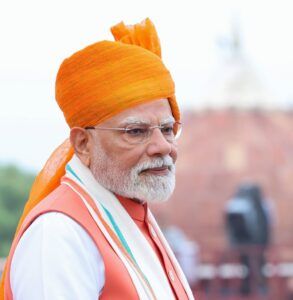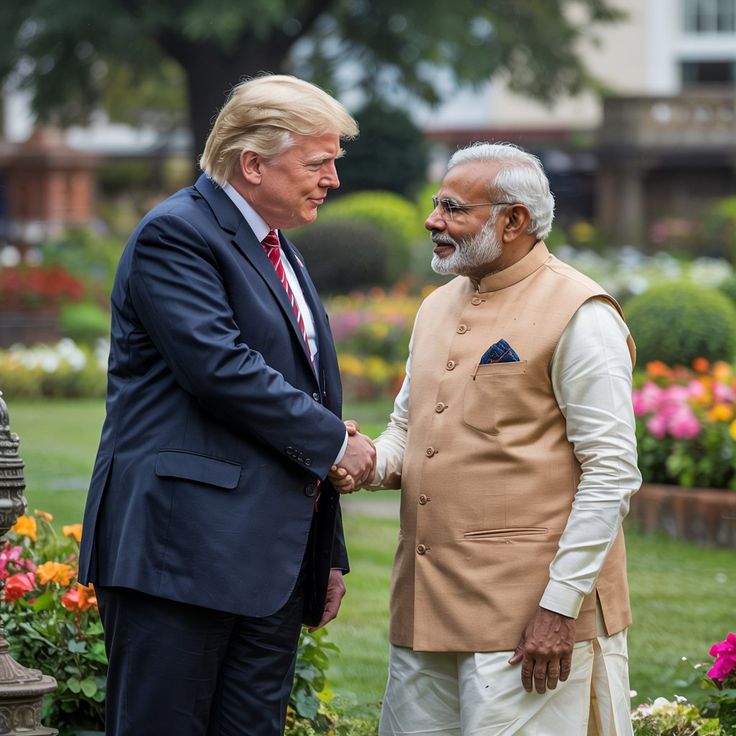In a defining moment of India’s journey toward strategic self-reliance, Prime Minister Narendra Modi today announced Mission Sudarshan Chakra, a groundbreaking defense initiative set to transform the nation’s security landscape by 2035. Named after Lord Krishna’s legendary celestial weapon, the mission aims to build a multi-layered, indigenous air and missile defense system to shield India’s valuable strategic, civilian and religious sites—and to strike back with precision when needed.

The historic unveiling of the “Mission Sudarshan Chakra” by Prime Minister Narendra Modi on Friday combines India’s historical heritage with its contemporary goals. He described the initiative as a transformative effort that aims to advance technological innovation, strengthen national security, and deepen India’s strategic preparedness for the future.
The announcement, made at Vigyan Bhavan in New Delhi, was met with thunderous applause from policymakers, defense officials, and scientists alike. Mission Sudarshan Chakra would serve as a “protective shield for India’s sovereignty and a driving force for its global rise,” Modi said, framing the mission as a symbol of India’s independence.
What is Mission Sudarshan Chakra?
At its core, Mission Sudarshan Chakra is a multi-dimensional national program designed to integrate defense modernization, indigenous technological development, and space-based capabilities. While official documents remain classified, sources suggest the mission includes three primary pillars:
Defense and Security Modernization – Boosting India’s preparedness with next-generation weaponry, cyber-security shields, and AI-enabled defense systems.
Space and Satellite Surveillance – Deploying advanced satellites to strengthen India’s real-time intelligence and disaster-response capabilities.
Technological Self-Reliance (Atmanirbhar Bharat push) – Encouraging domestic industries, start-ups, and research institutions to co-develop indigenous solutions.
It is no coincidence that Lord Krishna’s fabled celestial weapon is known by the symbolic term “Sudarshan Chakra.”“It is a reminder that India’s strength lies not only in its rich past but also in its ability to adapt and innovate for the future,” Modi said.
Modi’s Vision: Blending Tradition with Technology
In his address, the Prime Minister highlighted that the mission represents more than just a defense strategy — it embodies India’s civilizational philosophy.
In our mythology, the Sudarshan Chakra represented balance, righteousness, and protection in addition to being a weapon. Today, Mission Sudarshan Chakra will embody the same spirit, ensuring India’s safety while contributing to global peace,” he remarked.
By linking the program with India’s cultural ethos, Modi sought to give the mission both emotional resonance and political weight. Analysts believe this blend of tradition and modernity could help rally domestic support while also signaling confidence to the international community.
Strategic Importance
India faces a complex security environment — from cross-border terrorism and cyber threats to geopolitical tensions with China and Pakistan. The unveiling of Mission Sudarshan Chakra is widely seen as a response to these challenges.
Defense experts suggest the mission will likely focus on:
Improved missile defenses to combat changing aerial threats.
Artificial Intelligence Integration for faster battlefield decision-making.
Cybersecurity Networks to safeguard sensitive government and military infrastructure.
Satellite-Based Surveillance for round-the-clock border monitoring.
Retired Air Marshal S. Krishnaswamy commented: “If implemented as envisioned, this mission could place India among the top global powers with an integrated defense-tech ecosystem.”
Boost to ‘Make in India’ and Atmanirbhar Bharat
Another striking feature of the mission is its alignment with the Atmanirbhar Bharat (Self-Reliant India) initiative. Instead of overreliance on foreign defense imports, the program will empower Indian firms and research bodies.
DRDO (Defence Research and Development Organisation) is expected to take the lead.
Private sector giants in aerospace and cybersecurity will be roped in.
Start-ups will get special grants for AI, robotics, and defense-technology innovations.
This could provide a significant boost to India’s defense manufacturing sector, which the government has been aggressively promoting.
Global Reactions
Though the details remain classified, international observers are closely watching. The US State Department, in an early reaction, described Mission Sudarshan Chakra as “an important step for India in strengthening regional stability.”
China, however, responded cautiously, urging India to avoid actions that could “disturb the balance of power in Asia.” Analysts believe Beijing’s reaction reflects concerns over India’s growing military and space-tech ambitions.
Russia, meanwhile, applauded the announcement and alluded to potential future cooperation under partnerships in space and defense technologies.
Symbolism of the Name
The choice of the name has stirred discussions across political and academic circles. For many, “Sudarshan Chakra” evokes a sense of cultural pride and continuity.
Professor Ramesh Kumar, a political analyst, said: “By invoking Lord Krishna’s weapon, the Modi government is making a powerful statement — that India’s modern strength is deeply rooted in its civilizational identity.”
However, some opposition leaders criticized the government, calling the name a “political branding exercise.” They argued that defense policy should be pragmatic rather than symbolic.
Economic Implications
The mission is also expected to have a direct economic impact. With defense production corridors already established in Uttar Pradesh and Tamil Nadu, Mission Sudarshan Chakra could create over 2 lakh jobs in defense and aerospace sectors over the next decade.
Moreover, India’s rising defense exports — which crossed ₹21,000 crore in FY 2024 — are projected to grow further as indigenous technologies mature under this mission.
Public Reaction
Across social media, the announcement trended under hashtags like #MissionSudarshanChakra and #IndiaRising. While many praised it as a visionary step, others questioned its financial feasibility at a time when the economy faces inflationary pressures.
Young entrepreneurs, however, welcomed the emphasis on start-ups. “This could be the ISRO moment for defense-tech start-ups,” said Ananya Sharma, founder of a Bengaluru-based AI security company.
The Road Ahead
While the mission has been announced, its successful execution will depend on consistent funding, bureaucratic efficiency, and coordination among multiple stakeholders. Past defense modernization programs in India have often suffered from delays and budget overruns.
The government, however, seems determined. In his concluding remarks, PM Modi assured:
“This is a mission shared by 140 crore Indians, not just the government. We shall work together to create a safe, powerful, and independent India.
Mission Sudarshan Chakra is a strategic, symbolic, and economic vision for India’s future, not just a policy pronouncement. The Modi administration has sought to establish India as a leader in modernity and a defender of tradition by fusing the ageless emblem of the Sudarshan Chakra with state-of-the-art defense and technical advancement.


